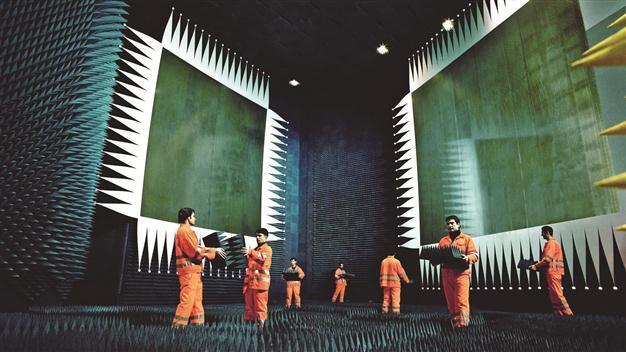Stereotypes and clichés reflect in the video art
ISTANBUL - Hürriyet Daily News

Julian Rosefeldt focuses on the clichés and political aspects of society in his video titled “Asylum,” which is showing at the Garibaldi building in Istanbul by Dirimart Gallery.
German video artist
Julian Rosefeldt focuses on the clichés and political aspects of society in his video titled “Asylum,” which is showing at the Garibaldi building in Istanbul by Dirimart Art Gallery.
Rosefeldt’s video focuses on clichés with a cinematographic approach. He created the images and chose the actors and actresses.
“The first part of the work deals with political asylum with certain stereotypes of people,” said Rosefeldt, adding that people in Western Europe had certain stereotypes or clichés about people who lived in other countries.
However, while dealing with those issues, Rosefeldt chose to reflect the immigration or migration aspect in European countries.
For instance, Chinese fast-food chefs, Vietnamese toy sellers, Thai prostitutes and Muslim cleaning women in the video appear as they live in asylum. “They are all asylum seekers,” said Rosefeldt.
The aspect of stereotypical images and clichés begin as the audience realizes they are all dressed in the same way. The dresses are like their costumes, according to Rosefeldt.
There are 120 actors. “I built nine groups, and each group represents a certain cliché and certain type of stereotype,” he said.
“These are the clichés that people would associate with the immigrants in England, Italy or France and Germany. Western Europeans would recognize certain clichés immediately. But I did not want to talk about their lives.”
However, Rosefeldt had also realized that he himself, althoug he was an open-minded person, did not have an idea about the lives of those people.
The whole project started when Rosefeldt visited Barcelona. “I saw a Pakistani or an Indian man selling flowers. I have seen this person in many European countries, and I realized I have no knowledge of their lives. And I thought that it was interesting to talk about our ignorance.”
Roselfeldt made a video that searched for the answers. He tried to awaken the interest of the audience. Rosefeldt makes the audience members ask themselves questions.
“We always visit those so called ‘exotic’ countries, and somehow we take pictures and record videos of the religious practices or the cultural activities in those countries,” he said. “However, we never realize the main idea behind those activities.”
The short film of Rosefeldt does not promise to reveal something new about those countries or those people. It serves to make us ask questions and maybe judge ourselves instead of judging them.
Rosefeldt produced “Asylum” originally as a nine-screen installation in different sets in and around Munich. In slow camera movements around the more than 200 participants, he illustrates in his very personal elegant and ironic style the stereotypes German society likes to reduce immigrants to: Pakistani, African, Chinese or Turkish people are shown as street and garbage workers, newspaper and flower sellers, cooks and cleaning women.
Turkey, exhibition,
